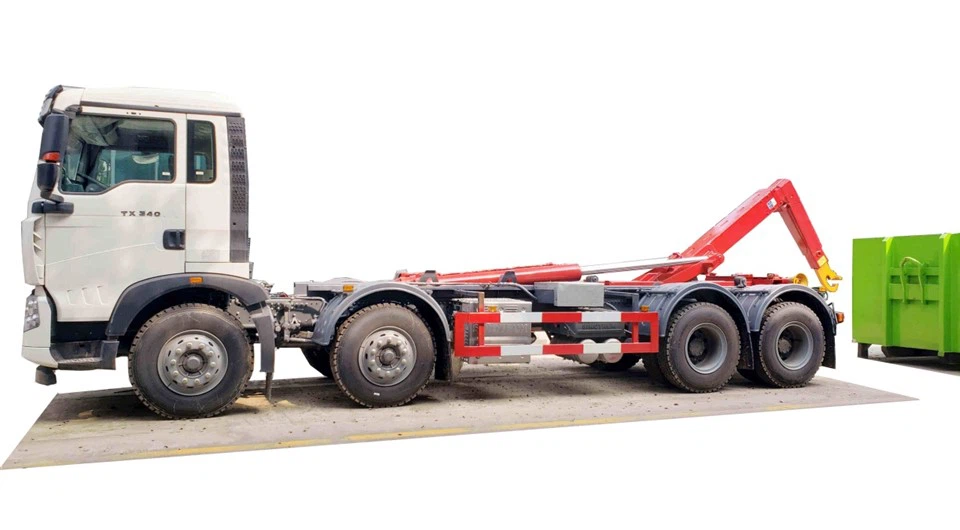Exploring 1940s Trucks: A Comprehensive Overview

Introduction to 1940s Trucks

The 1940s were a transformative decade in automotive history, particularly for trucks. These vehicles played a crucial role during and after World War II, supporting military operations and helping to rebuild economies. The trucks of this era were characterized by their robust designs, innovative engineering, and evolving technology. In this article, we will explore various aspects of 1940s trucks, including their history, popular models, features, and the legacy they left behind.
A Brief History of Trucks in the 1940s
Pre-War Developments
Before delving into the specifics of 1940s trucks, it is essential to understand the context that led to their development. In the years leading up to World War II, truck manufacturers began to focus more on producing vehicles tailored for commercial use. Innovations in engine technology and materials improved truck reliability and efficiency.
Impact of World War II
The onset of World War II dramatically shifted the focus of truck production. Many manufacturers converted civilian truck production lines to produce military vehicles. This shift not only influenced the design but also the functionality of trucks, leading to advancements in capability and durability.
Post-War Resurgence
After the war ended in 1945, the truck industry experienced a boom. With economies rebuilding and an increased demand for transport, manufacturers ramped up production of both civilian and commercial trucks, setting the foundation for the truck models we see today.
Key Features of 1940s Trucks
Design and Aesthetics
The trucks of the 1940s showcased a blend of utilitarian design with stylized elements. Most models featured a prominent front grille, rounded edges, and an overall robust look. Notable aesthetic features included:
- Flat front hoods
- Simple interiors with minimal decoration
- Bold color schemes, often in shades of blue, green, or gray
Engine and Performance
Engine technology saw significant improvements during this decade. Trucks were commonly powered by inline-six or V8 engines, providing better power and reliability. Performance metrics included:
| Engine Type | Horsepower | Payload Capacity |
|---|---|---|
| Inline-six | 85-100 hp | 1-2 tons |
| V8 | 100-150 hp | 1.5-3 tons |
Driving Experience
Driving a truck from the 1940s was a different experience compared to modern vehicles. Trucks had a manual transmission system, which required greater driver involvement. Notable features included:
- Mechanical brakes
- Simple steering mechanisms
- Limited comfort features, such as basic seating and lack of climate control
Popular 1940s Truck Models
Ford F-Series
The Ford F-Series debuted in 1948 and quickly became a staple of American trucks. It was known for its durability and was available in several configurations. Its key features included:
- Flatbed and stake body options
- Powerful engines, including a new V8
- Rugged construction suitable for multiple industries
Chevrolet Advance-Design
Introduced in 1947, the Chevrolet Advance-Design was popular among farmers and business owners. Highlights included:
- Iconic split windshield for better visibility
- Easy-to-repair components
- Robust payload capacity
Dodge Power Wagon
The Dodge Power Wagon was a favorite in military and civilian use due to its off-road capabilities. Key features:

- Four-wheel drive for rough terrain
- Sturdy chassis and suspension
- Variety of configurations for utility purposes
International Harvester KB Series
International Harvester’s KB series was well known for its rugged build and reliability. Key attributes included:
- Versatile body styles
- Higher-than-average payload capacity
- Available parts for easy maintenance
The Role of Trucks in Post-War America
Economic Impact
Trucks played a pivotal role in post-war economic growth by transporting goods across the nation. The expansion of infrastructure, such as highways, further enhanced their significance.
Cultural Significance
Trucks became symbols of American independence and ingenuity, appearing in advertisements, films, and everyday life. Their ruggedness mirrored the spirit of the country during a time of recovery and growth.
Collecting and Restoring 1940s Trucks
Why Collect 1940s Trucks?
Collecting 1940s trucks offers enthusiasts a tangible piece of history. These vehicles represent a crucial period of development in the trucking industry and serve as reminders of America’s industrial past.
Restoration Tips
Restoring a 1940s truck can be rewarding. Here are some practical tips:
- Research the model to understand common issues.
- Look for original parts for authenticity.
- Join a restoration club for guidance and support.
Modern Uses of 1940s Trucks
Classic Shows and Exhibitions
Many enthusiasts showcase their 1940s trucks at classic car shows, where they are celebrated for their design and engineering. These events connect collectors, share knowledge, and promote appreciation for historical vehicles.
Everyday Use

Some collectors choose to use their trucks for daily tasks, benefiting from their durability while enjoying a unique driving experience.
Maintenance Practices for 1940s Trucks
Routine Checks
Maintaining a 1940s truck requires special attention. Routine checks should include:
- Oil changes every 3,000 miles
- Brake inspections
- Fluid level checks
Parts Sourcing
Finding parts for vintage trucks can be a challenge. Resources include:
- Local auto parts stores specializing in vintage vehicles
- Online marketplaces like eBay or specialized forums
- Restoration shops that offer reproduction parts
FAQs about 1940s Trucks
1. What were the most popular truck brands in the 1940s?
The most recognized brands included Ford, Chevrolet, Dodge, and International Harvester, all of which produced models that are still cherished by collectors today.
2. How did World War II influence truck design?
Many manufacturers shifted their focus to military trucks, leading to innovations in durability, payload capacity, and ruggedness that carried over into civilian models after the war.
3. Are 1940s trucks safe to drive on modern roads?
While 1940s trucks can be driven on modern roads, they lack many safety features found in contemporary vehicles. It’s important to ensure they are well-maintained to promote safety.
4. What are some common challenges of restoring a 1940s truck?
Common challenges include sourcing original parts, dealing with rust, and ensuring the engine is in good working condition to meet modern standards.
5. How can I join a classic truck club?
Many regions have classic car clubs or online forums dedicated to vintage trucks. Joining such groups can provide valuable resources and community support for enthusiasts.
6. What should I consider when buying a 1940s truck?
Consider the truck’s condition, availability of parts, mechanical issues, and whether you prefer a restoration project or a ready-to-drive vehicle.
